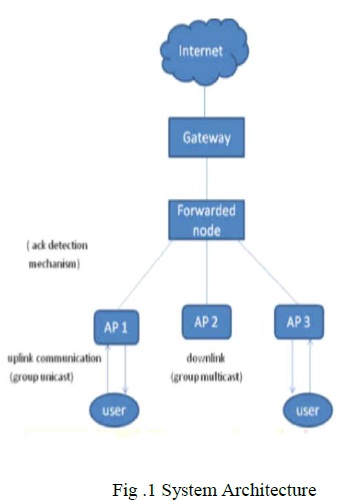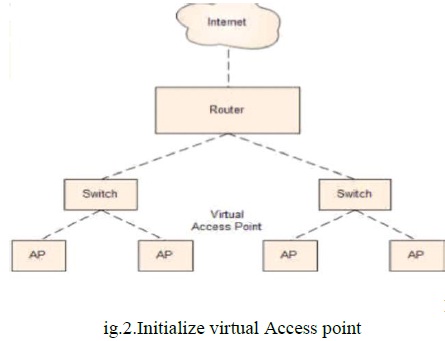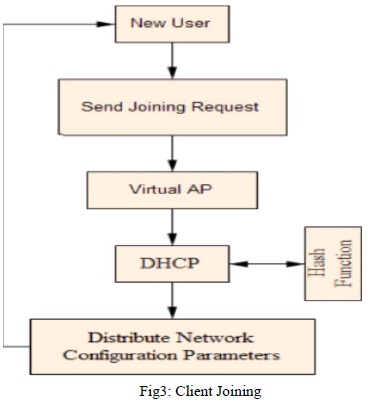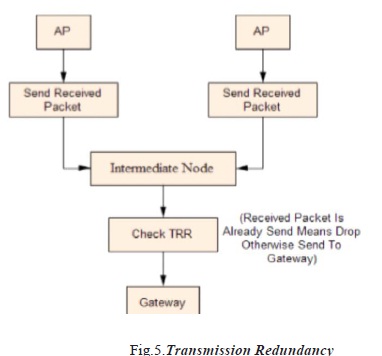





Published on Mar 01, 2025
In wireless communication, the connections will be either unstable or dynamic. Hence the connections will be easily disturbed by the interrupts like noise. Now-a-days mobile networks provide the internet connections with expensive cost. Cellular networks suffer from offloading and overloading problem due to the explosive growth of mobile users in moving vehicles. WIFI technology is used to provide the efficient internet connectivity for the moving vehicles. WIFI technology has some advantages compared with the cellular networks, such as, low cost and high peak throughput.
To avoid the offloading problem and delays in the internet access over moving vehicles, the access point diversity technique is used. For example multiple access points can be fixed in the road side. When the client can enters that environment, it can communicate with the group of access point through the up link. Each access point may have different ranges.
So, when the client is moving from one access point to another access point, the delays may be occurred due to the hand off technique. Hence the virtual access point is created in order to avoid the delays. Virtual access point is the one, in which all the access points are configured with the same MAC and IP address. If the transmission is succeed access point send the information to the client through the multi cast communication. Then the access points dynamically follow the client and deliver the packets.
The growth in the improved number of vehicles are furnished with wireless transceivers to communicate with one another to form a particular class of wireless networks, known as SWIM. Due to the explosive growth of the subscriber number and the mobile data, cellular networks are suffering burden, and the user experiences quality degradation. Compared with cellular networks, WiFi has obvious advantages: less in cost and high throughput. Thus Wi-Fi is considered as a suitable solution for cellular traffic offloading. It is difficult to provide WI-FI based internet access to users in moving vehicles.
The reasons are elaborated as follows.
1) Station circumstance in a vehicular environment is harsh due to fading, interference, and noise, which results in high packet loss rate and makes the communication less efficient.
2) A client moves at a particular speed in vehicle, it is extremely challenging to be always associated with the suitable AP.
3) The restricted exposure of each AP, a client suffers a numerous connection disturbances caused by frequent hand offs and re-associations.
Usually, wireless ad hoc networks do not trust on fixed infrastructure for communication and spreading of information. SWIM follows the same principle and apply it to the dynamic environment of surface transportation. SWIM can combine both WLAN and cellular network to form the networks so that a WLAN is used where an access point is available and a 3G connection otherwise [3]. Static gateways around the sides of roads could provide connectivity to mobile nodes (vehicles), but are unfeasible in considering the infrastructure costs. In such a case, all vehicles and road-side wireless devices can form a pure mobile ad hoc network in order to perform vehicle to vehicle communications and achieve the goals.
Proposed system supports efficient WI-Fi based internet access from moving vehicles. Here access point diversity technique is used. The group of access point can communicate with client. These access points contain the same MAC and IP address. The group of access points can communicate with client is called AP diversity. Then the transmission is succeed, if the access point can delivered the data to the client is called opportunistic transmission. This access point diversity is used to reduce the packet loss.
In AP diversity a client gets graceful illusion that only one (virtual) AP exists, and will always be with this “virtual” AP. Up link communications, when the client transmits a packet to the virtual AP ,then it contain multiple AP's within its transmission range are able to receive the same packet. The transmission is successful as long as at least one access point receives the packet correctly. After the up link communications AP sends the ACK to the client. For this transmission the group uni cast method is used. To avoid the possible collisions the ACK detection mechanism is used.
For down link communication the group multi cast method is reliability is enhanced and packet loss is reduced. An ACK detection function is used to improve the efficiency of the channel utilization. The ACK based rate control mechanism is used to improve the efficiency of the channel utilization.
The hand off delays are eliminated. The packet delivery in down link communications is used to increase the portability of successful transmissions.
AP diversity to overcome the issue of unreliable links and unstable connections.
By configuring all the Aps with the same setting, both layer-2 and layer-3 handoffs of the mobile client are eliminated, and seamless roaming within the coverage of the entire network is achieved.
In this work, the road is completely covered by the open WI-Fi access point (AP s) and coverage of each AP may overlap with others. Each access point is equipped with two interfaces; one is for client access based WI-Fiwhile other uses wired or wireless medium to form a back haul. The user entering into the environment, it gets the new Mac and IP addresses. First user sends the request to the access point. Then the access points are receiving the requests and send the information to the gateway through the forwarded node. Finally reply will send through the nearby access points.

Configuring all the AP's with the same MAC and IP addresses with such a configuration, a client gets a graceful illusion that only one (“virtual”) AP exists, and will always be associated with this “virtual” AP. When AP's have established routing paths to the gateway, the back haul is organized into a tree topology with the gateway as the root and APs as leaves. A group of AP's are employed to communicate with a client (called “AP diversity”). The identical configuration of all the APs has advantage: both IP-layer and MAC-layer hand off are eliminated. Hence, connection disruptions caused by the hand-offs and re-associations are avoided, and the network connection will not be disrupted even if an AP crashes. A potential requirement of AP diversity is that all AP's operate on the same wireless channel.

When the client intends to join the If multiple AP's receive a packet, each of them will transmit an ACK after a period of short inter-frame space (SIFS). These multiple copies of AC Ks may collide at the client. Hence, a new scheme is designed to handle such collisions. In the new scheme, the ACK decoding is enhanced with ACK detection. network, it is associated with this virtual AP, and requests an IP address through DHCP (Dynamic Host Configuration Protocol). The DHCP server running at each AP uses the same hash function to compute a unique IP address for the client based on the its MAC address. DHCP is a client/server protocol that automatically provides an Internet Protocol (IP) host with its IP address and other related configuration information such as the subnet mask and default gateway.

The DHCP is a standardized network protocol used on Internet Protocol (IP) networks for dynamically distributing network configuration parameters, such as IP addresses for interfaces and services. With DHCP, computers request IP addresses and networking parameters automatically from a DHCP server, reducing the need for a network administrator or a user to configure these settings manually.
A packet can be received by multiple AP's. If all copies of the same packet are forwarded to the gateway, extra overhead is introduced to the back haul. In order to minimize TRR, a redundancy removal mechanism is used. If an intermediate node in the back haul network receives a packet that has been forwarded, it simply drops the duplicated packet. To determine whether a packet has been delivered before, a few fields of the packet are checked to identify the packet. It can be identified by a 5-tuple of <source_IP, source_port, destination_IP, destination_port, transmission sequence_number>.

In a LAN back haul, the AP's are interconnected by cables, hubs and switches. When a node transmits a packet to its upper-layer node, other nodes in the same sub net can overhear the packet as well. Thus, these node are able to directly avoid redundant transmissions. In a WMN back haul, one AP may not overhear the back haul transmission of a packet from another AP. In this case, two AP's may forward the same packet to an upper-layer node. Such redundancy has to be eliminated at the upper-layer node.
Nowadays WIFI hot spots are deployed widely and densely in many cities and the trend continues. Compared with cellular networks, WIFI has obvious advantages: lower cost and higher peak throughput. Thus, WIFI is considered as a suitable solution for cellular traffic offloading. However, it is still challenging to provide WIFI -based Internet access for users in moving vehicles. The above problem can be solved by our proposed access point diversity concept. It supports efficient WIFI-based Internet access for moving vehicles. The roaming of clients was gracefully achieved, while channel utilization efficiency was improved. It has high performance compared to existing system.
[1] Ahmed. N, Keshav. S, and Papagiannaki. K (2011),“Omnivoice: A mobile voice solution for smallscale enterprises,” in Proc. 12th ACM Int. Symp. Mobile Ad Hoc Netw. Comput., pp. 1–11
[2] Aijaz. A, Aghvami. H, and Amani. M (April 2013), “Adaptive Frequency Hopping Algorithm for Mulitcast Rendezvous in DSA Network,” IEEE Wireless Commun., vol. 20, no. 2,pp. 104–112.
[3] Bai. F, Stancil. D, and Krishnan. H (2010),“Toward understanding characteristics of Dedicated Short Range Communications (DSRC) from a perspective of vehicular network engineers,” in Proc. 16th Annu. Int. Conf. Mobile Comput. Netw.,pp. 329–340.